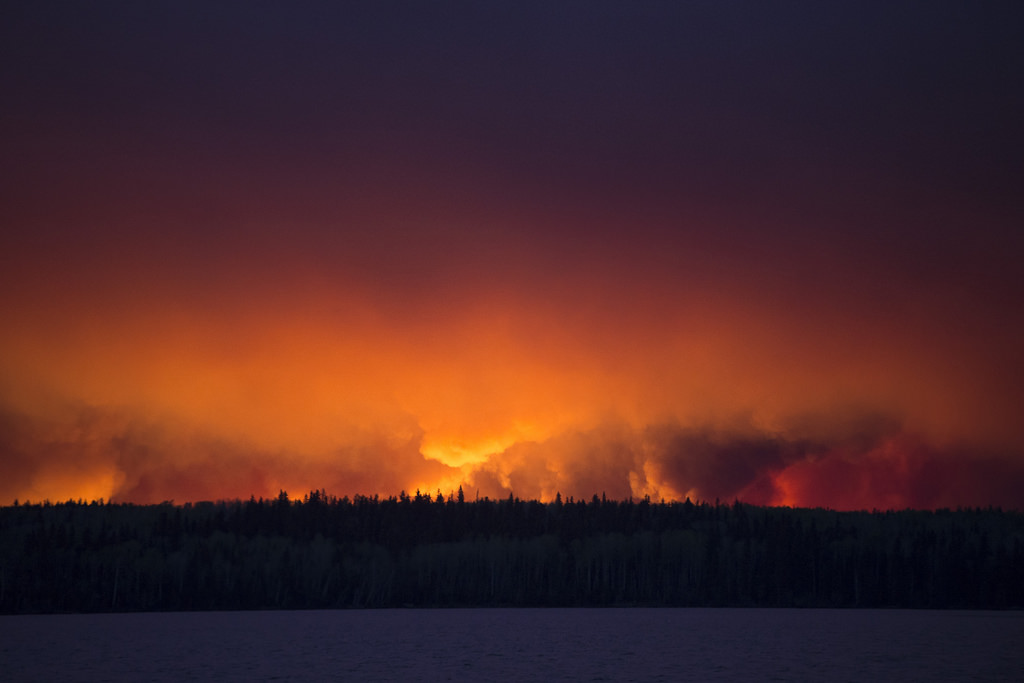New research from Utah State University argues that the modern focus of wildfire trend reports underestimate the threats to water security.
Dramatic increases in wildfire over the last few decades have garnered considerable media attention. Headlines claim that the amount of wildfire in the western U.S. is unprecedented. This trend is often mirrored in reports on wildfires in Canada, as well, whether west or east.
“Last year, BC was under a 10-week state of emergency to deal with blazes that eventually burned through 1.2m hectares of the province,” wrote the BBC in August.
“There were more than one thousand wildfires in central and northern Ontario this year,” wrote the CBC in a news piece released, yesterday.
Importantly, by focusing on solely on size, such reports can miss the critical facts and consequences resulting from wildfires.
Beyond the 1984 perspective: narrow focus on modern wildfire trends underestimates future risks to water security, was published in a recent issue of Earth’s Future. Authored by Brendan Murphy, Larissa Yocom, and Patrick Belmont at the S.J. and Jessie E. Quinney College of Natural Resources at Utah State University, the work compiles long-term fire datasets that demonstrate the amount of wildfire occurring in the western U.S. remains far below the acreage burning prior to pre-European settlement. Specifically, records show that historically 4 to 12 per cent of the entire western U.S. would burn each year.
In their work, the authors argue that wildfire should be viewed as an inevitable part of the future in the western U.S. Drying of western forests due to climate change coupled with the buildup of excess vegetation after decades of fire suppression have led to exceedingly low amounts of fire.
“The annual amount of area burning can be informative for demonstrating that wildfires are on the rise with climate change, but alone, this metric is insufficient,” said Brendan Murphy, lead author and postdoctoral fellow in watershed science at USU. “If we hope to better predict the future risks wildfires pose to water resources and more effectively manage our ecosystems, then it is critical we give other wildfire attributes, specifically burn severity, more consideration.”
This change in perspective would shift assessments of fire liabilities and prevention and mitigation plans.
While the authors acknowledge the well-documented risk that wildfires pose to homes and structures, particularly those built in the wildland-urban interface, they highlight the less appreciated and underestimated risk that uncontrollable, high severity wildfires pose for water security. Further, they suggest that focusing on the amount of area burned is not enough to understand these complex issues.
“A crucial first step toward realigning public perspectives will require scientists and journalists to present recent increases in wildfire area within the context and scale of longer‐term trends,” wrote the authors.
Low severity wildfire benefits forest health and poses less risk to water infrastructure, so the authors argue that more areas burning can reduce the frequency of catastrophic wildfires. This approach will require reducing restrictions on prescribed burns and managed wildfires.
Other forests naturally burn at high severity, and the authors argue that the best approach in these areas is to limit or eliminate development. The authors believe we need to adopt more widespread and effective management strategies for our forest and water resources.
In a recent feature re-published on Water Canada, Edward Struzik, author of Firestorm, How Wildfire Will Shape Our FutureThe Conversation, and a fellow at the Queen’s Institute for Energy and Environmental Policy, called for a national policy on wildfire.









